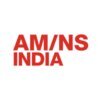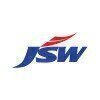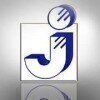Filter interviews by
Viraj Profiles Executive Engineer Interview Questions and Answers
Viraj Profiles Executive Engineer Interview Experiences
2 interviews found
I applied via Referral and was interviewed before Dec 2022. There was 1 interview round.
(2 Questions)
- Q1. What do you mean by roll cost?
- Ans.
Roll cost refers to the expenses associated with the production of rolls, typically in manufacturing or printing industries.
Roll cost includes the cost of raw materials, labor, equipment, and overhead expenses involved in the production process.
For example, in a paper manufacturing company, roll cost would include the cost of wood pulp, energy consumption, machine maintenance, and labor wages.
Roll cost analysis helps i...
- Q2. How chock overhauling is done?
- Ans.
Chock overhauling is a process of inspecting, repairing, and maintaining chocks used in various engineering applications.
Chock overhauling involves disassembling the chock to inspect its components for wear and damage.
Any worn or damaged parts are repaired or replaced to ensure proper functioning.
The chock is then reassembled and tested to ensure it meets the required specifications.
Regular chock overhauling helps prev...
I applied via Campus Placement and was interviewed before Nov 2021. There were 2 interview rounds.

(6 Questions)
- Q1. Tell me about yourself
- Q2. Tell me about your project and internship
- Q3. What is Yield Explain it?
- Ans.
Yield is the amount of product obtained in a chemical reaction or manufacturing process.
Yield is expressed as a percentage of the theoretical maximum amount of product that could be obtained.
Factors that can affect yield include reaction conditions, purity of reactants, and the efficiency of the manufacturing process.
For example, if a chemical reaction has a theoretical yield of 100 grams and the actual yield is 80 gra
- Q4. Why your education gap?
- Q5. What is your extra curricular activities?
- Q6. Explain about your project?
Interview Preparation Tips
- Resume
- Yield Management
- Internship
- Project
- Introduction
- Technical
Culture have been improving.
Top trending discussions






Interview questions from similar companies

Executive Engineer Interview Questions & Answers
Jindal Steel and Powerposted on 6 Jul 2017
I appeared for an interview before Jul 2016.
Interview Questionnaire
1 Question
- Q1. Introduction, company profile,hobby,about your work
Interview Preparation Tips
Experience: after shortlisted of resume call from jindal group
Round: Group Activity
Experience: fulfill form and enjoy.
Round: Test
Experience: passed in exam.
Duration: 30 minutes
Total Questions: 80
Round: Technical + HR Interview
Experience: I'm faces all questions and confidentially answerd

Executive Engineer Interview Questions & Answers
Jindal Steel and Powerposted on 3 May 2019
Interview Questionnaire
1 Question
- Q1. 1- Your Experience 2- Favourite Subject Like in my case i said Fluid Mechanics, so he asked questions on the subject. Types of pumps, NPSH, Bernoullis theorem, barometric head, types of fluid, Cavitation...
Interview Preparation Tips
Experience: When you will go through the JSPL website it will say the following things asked in the test
Aptitude
Reasoning
Technical 40ques 18min.
Psychometric test
But aptitude was not asked only verbal Reasoning.
So basically
80 questions and 60 minutes.
Round: Group Discussion
Experience: Digital India and
Ecological development over Economic development.

I applied via Company Website and was interviewed before Jan 2022. There were 2 interview rounds.

(4 Questions)
- Q1. Want to move or not, how motivated you're, why you want to work here?
- Q2. Warning that job is out of comfort how you will manage?
- Q3. What makes you searching for another job, your current job is not good, salary,work profile, culture or what?
- Q4. Do you love challenges in life, if yes then explain an instance in your life that says you do?
Interview Preparation Tips

Executive Engineer Interview Questions & Answers
SHYAM METALICS AND ENERGYposted on 19 Jan 2025
I applied via Approached by Company and was interviewed before Jan 2024. There was 1 interview round.
(3 Questions)
- Q1. Which dcs have you worked
- Ans.
I have worked with several DCS systems including Honeywell Experion PKS, Emerson DeltaV, and Siemens PCS 7.
Honeywell Experion PKS
Emerson DeltaV
Siemens PCS 7
- Q2. Would you like to join our company
- Ans.
Yes, I am interested in joining your company as an Executive Engineer.
I have the necessary skills and experience for the role
I am excited about the opportunity to contribute to the company's success
I believe in the company's values and vision
- Q3. ABB 800M, EMERSON 380,
Interview Preparation Tips

(1 Question)
- Q1. PLC and Drive related questions
Interview Preparation Tips

I applied via Walk-in and was interviewed in Nov 2022. There were 3 interview rounds.

(1 Question)
- Q1. Ctc package job location reason of job change
- Ans.
Looking for better growth opportunities and challenging projects in a new location.
Seeking a more challenging role as an Executive Engineer
Desire to work on new projects and expand skill set
Location change for personal reasons
Salary and benefits package is also a factor
(1 Question)
- Q1. About my work job role
Interview Preparation Tips

Executive Engineer Interview Questions & Answers
Jindal Steel and Powerposted on 13 Jun 2024
(2 Questions)
- Q1. Which plc you work on
- Ans.
I work on Siemens S7-1200 PLC for automation in industrial processes.
Siemens S7-1200 PLC is commonly used for automation in industrial processes
It offers high performance and reliability
It has a user-friendly interface for programming and monitoring
It supports various communication protocols for integration with other systems
- Q2. Project work on
(2 Questions)
- Q1. Document school college
- Q2. Salary negotiation

I appeared for an interview before Nov 2022.

(1 Question)
- Q1. About my Experience
(1 Question)
- Q1. About my Technical knowledge
(1 Question)
- Q1. About my Experience technical, management
Viraj Profiles Interview FAQs
Tell us how to improve this page.
Viraj Profiles Interviews By Designations
- Viraj Profiles Electrical Engineer Interview Questions
- Viraj Profiles HR Intern Interview Questions
- Viraj Profiles Front Office Executive Interview Questions
- Viraj Profiles Management Trainee Interview Questions
- Viraj Profiles Senior Electrical Engineer Interview Questions
- Viraj Profiles Executive Engineer Interview Questions
- Viraj Profiles Shift Engineer Interview Questions
- Viraj Profiles Mechanical Engineer Interview Questions
- Show more
Interview Questions for Popular Designations
- Senior Executive Engineer Interview Questions
- Safety Executive Interview Questions
- Electrical Engineer Interview Questions
- Executive Production Interview Questions
- Assistant Executive Engineer Interview Questions
- Quality Executive Interview Questions
- QA QC Engineer Interview Questions
- QA Executive Interview Questions
- Show more
Viraj Profiles Executive Engineer Interview Process
based on 1 interview
Interview experience
Interview Questions from Similar Companies
Fast track your campus placements
Viraj Profiles Executive Engineer Reviews and Ratings
based on 16 reviews
Rating in categories
|
Assistant Engineer
203
salaries
| ₹1.8 L/yr - ₹4.6 L/yr |
|
Production Engineer
154
salaries
| ₹1.8 L/yr - ₹6 L/yr |
|
Assistant Manager
130
salaries
| ₹4.2 L/yr - ₹13 L/yr |
|
Senior Engineer
113
salaries
| ₹3 L/yr - ₹8.2 L/yr |
|
Engineer
109
salaries
| ₹2.2 L/yr - ₹6.6 L/yr |

Tata Steel

Jindal Steel and Power

ArcelorMittal Nippon Steel

Jindal Stainless
- Home >
- Interviews >
- Viraj Profiles Interview Questions >
- Viraj Profiles Executive Engineer Interview Questions















